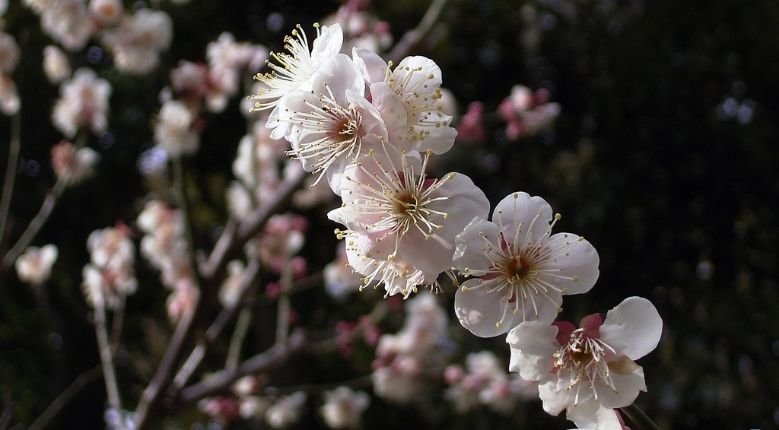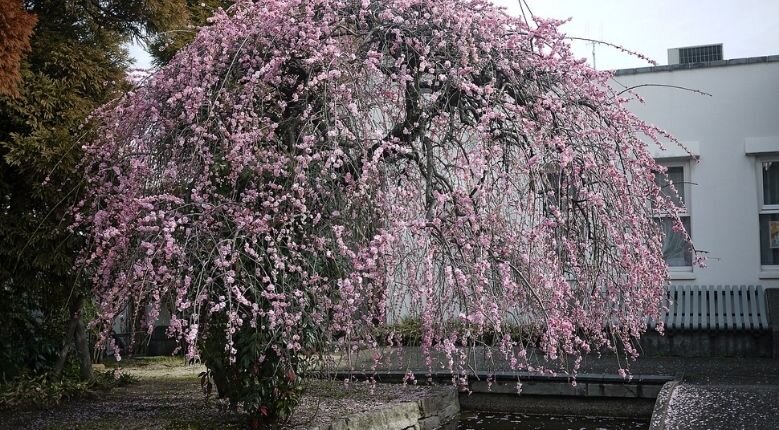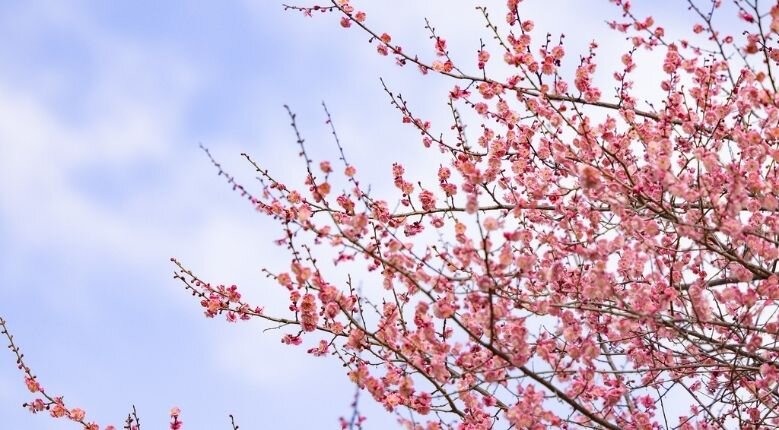
White plum blossoms seen in Okamoto Bairin Park, Kobe (Photo from: Daiju Azuma/CC BY 2.0)
Every year come March, people all over the world flock to Japan to be part of the famed Cherry Blossom festivities. Unbeknownst to many, the Plum Blossoms (or locally known as Ume Blossoms) are the true beckoning of Spring!
Plum blossoms bloom just before cherry blossoms, starting as early as mid-February until the end of March. Their beauty has been overshadowed by cherry blossoms in modern times but they put on an equally spectacular display during the flowering season. The dainty plum blossoms come in varying shades, ranging from white to deep pink. Since it has a bloom period of two to four weeks, you can appreciate the splendour of Ume blossoms for a longer time as compared to the fleeting cherry blossoms.
Unlike the sakura’s very faint fragrance, plum blossoms give off the most wonderful scent like a sweet, floral perfume. It just makes the whole plum blossom viewing experience so much more memorable!
Ume: The True Flower That Sparked The Hanami Tradition

Weeping plum tree found in Yumeji Art Museum, Okayama prefecture (Photo from: 663highland/CC BY 2.5)
Originally brought in from China during the early Heian period (794-1185), plum trees became popular as ornamental garden fixtures because of their delicate beauty. Over the years, many varieties have been cultivated and now you see ume blossoms in a myriad of colours.
Ume blossoms are the first flower of spring and the original inspiration for flower-viewing hanami parties that were so well-loved by the rich aristocrats from the past.

Pink plum blossoms in full bloom (Photo from: mrhayata/CC BY 2.0)
The Japanese people also believe that aside from their ornamental purposes, plum blossoms can also dispel evil and bring good fortune. That is why you will still see ume trees planted in gardens and within the compounds of shrines that are facing the northeast direction (the direction from which misfortune comes).
The Plum Blossom Inspiration In Japanese Arts
As a symbolic harbinger of spring, plum blossoms have long been an inspiration to artists and their influence is evident in many forms of Japanese art. You can find these gorgeous flowers depicted in paintings, poems and even clothing.
Waterpainting of ume flowers
In a famous poem that can be found in the Man'yōshū, the oldest collection of traditional Japanese poems, the poet expressed his admiration for these beautiful flowers and the lonely feelings of a traveller in a bittersweet way. And this is just one poem out of many.
春さればまづ咲くやどの梅の花ひとり見つつや春日暮らさむ
The pretty plum blossom motifs, with their characteristic five round petals, are also commonly seen on Japanese fabrics and kimono prints. Although these flowers bloom in the early spring, they are featured on kimonos all year round because they are symbolic of renewal, peace and longevity. Along with the kimono, plum blossoms are also often used in Hana Kanzashi, which are traditional Japanese decorative hairpins.


